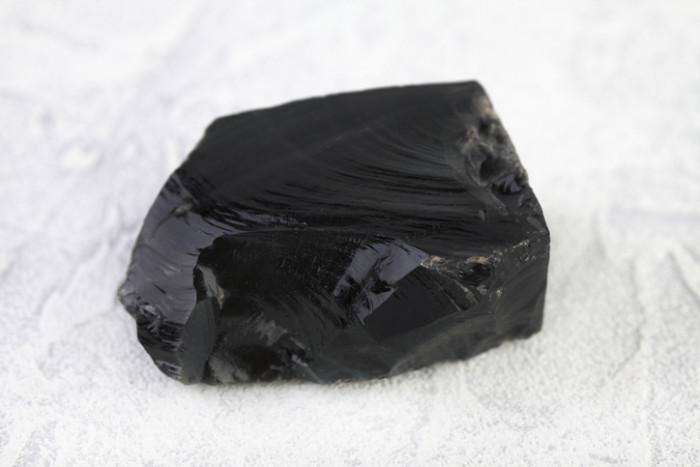GyeongGi Cultural Foundation
Obsidian Route
The Paleolithic era, when stone was beaten to make tools and used, began at least 2.5 million years ago. Considering that the beginning of the Neolithic Age, which began to grind stone to make stoneware, is about 10,000 years ago, most of human history is in the Paleolithic Age. If you explain the process of evolution of mankind in the Paleolithic era and the development of stoneware making technology in a very simple and short way, it can be said that "the head gets bigger and the stoneware gets smaller." It can be understood that getting bigger head means getting better head, and getting smaller stoneware means better portability and convenience. The process of changing the size of stoneware in the Paleolithic era is like the process of turning a large brick-sized cell phone into a smartphone that fits comfortably in the hand. Stoneware of the Paleolithic era is already showing the tendency of miniaturization of products as technology advances.

In the Paleolithic period, large, heavy and crude stone tools such as knives and cleavers dominate. From the late Paleolithic era about 40,000 years ago, small and sharp stone tools such as stone blades and stabbers were made, and in the late Paleolithic period, sophisticated stone tools such as art objects also appeared. In order to make stoneware that is getting smaller and smaller like this, stoneware manufacturing technology has also continued to develop.
Early stone ware makers made cracking stones by hitting a large stone or hitting the stone directly with a stone hammer. Naturally, a large, crude stoneware was made. An indirect hitting technique has emerged to make stoneware smaller. Instead of removing the stone directly with a stone hammer, a kind of punch made of antlers is used to remove the long, thin stoneware, that is, the stone blade. At the end of the Late Paleolithic period, a revolutionary stoneware-making technique, called crushing, appeared. Rather than breaking the stone by tapping it, a new technology was created to remove it by gently pressing it with a tool like the tip of a deer antler. Of course, it took millions of years, but the Paleolithic Age, which developed the depressing technique through several stages of revolutionary technological development, eventually passed into the Neolithic Age with the emergence of another new technique of grinding stones to make blades. do.
Meanwhile, as stoneware manufacturing technology develops, more diverse types of stones are used, and new technologies and new materials meet. Obsidian is the leading new material that appeared in the late Paleolithic era. Obsidian is a rock that is formed when lava hardens rapidly. It has a strength similar to that of glass, and can make sharp and precise blades with a light blow. Obsidian stone blades are so thin and sharp that even modern science and technology cannot keep up with them. A new material called obsidian is processed with a new technology called depressing, which is why a new stoneware with breakthrough performance has emerged.
However, one problem was that this obsidian was not a common stone like the marble scattered along the river. Most of the obsidian stone tools found in Korea are made of obsidian from Baekdu. Where is Mt. Baekdu? A stoneware made of obsidian from Mt. Baekdu, hundreds of kilometers away from Seoul... . You can imagine a scene where a stone craftsman from the Paleolithic period went a long way to retrieve obsidian, and you can also picture a Paleolithic bobu-sang who was carrying obsidian and bartering.
The road where obsidian was supplied from Paekdu Mountain to the southern central region of the Korean peninsula in the Paleolithic period, the dream-like day of exploring the obsidian route may come sooner or later.
<Copyright(c)2002 GGC All rights reserved.>
- Writer
- GyeongGi Cultural Foundation
- About
- Everything about the GyeongGi arts and culture, GGCF
- homepage
- https://www.ggcf.kr/